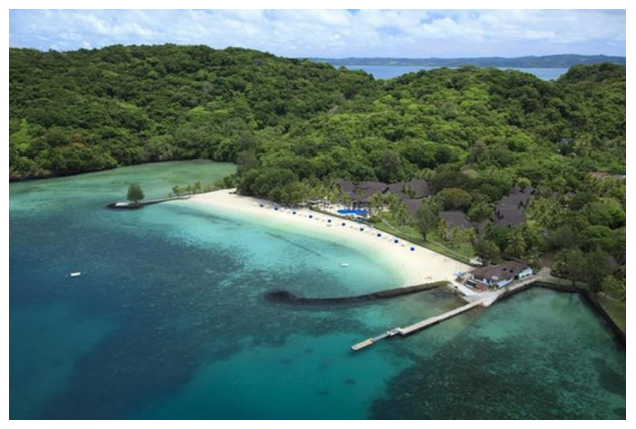No-take zone: Palau braces for challenges in implementing National Marine Sanctuary Act
- By Raquel Bagnol
- Feb 7, 2020
- 3 min read


The Palau National Marine Sanctuary Act went into full effect on Jan. 1. Signed in 2015, the law designates Palau’s marine sanctuary as a no-take zone. But with potential poachers’ intrusion into the protected area, stakeholder said enforcement can be a challenge.
"We will conduct patrols in the marine sanctuary as we did in the past in the (Palau Exclusive Economic Zone) and as we will be doing in the domestic fishing zone," said Victor Remengesau, director of the Marine Law Enforcement Division under the Ministry of Justice.
Remengesau said the Palau government has built regional partnerships and will adopt the latest technology to alleviate the enforcement challenges and ensure that no resources are extracted from the sanctuary.
Under the law, fishing in the sanctuary and unlicensed fishing in the domestic fishing zone by neighbors constitute a breach of the PNMS Act and violators are subject to prosecution.
"The closure of the PNMS represents not the end of our work but the beginning of the next phase for Palau in ensuring the success of this Marine Protected Area. Our utmost efforts will be to utilize partnerships, stakeholder engagement, and adaptive management to address these challenges," Remengesau said.
The Palau government will utilize not just patrols, where there is actual presence in the sanctuary, but will also expand all tools available in the monitoring, control and surveillance toolbox such as the sensing/monitoring such as the coastal surveillance system, Remengesau said.
The government will utilize offshore patrol vessels Remeliik, and later this year, replacement vessel Remeliik II, as well as Kedam. These platforms will be supplemented by air surveillance support, provided by the Pacific Maritime Security Program of the Australian Department of Defense coordinated by Forum Fisheries Agency.
Remengesau said Palau has ship-rider agreements that require officers on board partner's surface platforms to work with the U.S. Coast Guard, and now with Taiwan and to ensure compliance as with Japan Fisheries Agency. "Lastly, we have a standing Niue Treaty Subsidiary agreement with FSM whereby FSM is authorized to conduct law enforcement in Palau waters should we ask them," he said.
The domestic fishing zone covers the remaining 20 percent of Palau's EEZ where fishing is still allowed. The domestic zone is regulated by the Ministry of Natural Resources, Environment and Tourism.
The Palau International Coral Reef Center (PICRC) and the Stanford Center for Ocean Solutions (COS) have forged a two-year partnership to form a working group of experts in ecology, socio-economics and fisheries to compile and assess existing research in order make both policy and research recommendations.
PICRC-COS recommended that Palau shift its focus from large-scale commercial fishing, even pole-and-line fishing, to supporting the already existing small-scale fishermen who exist in this space. "Much of the work moving forward will involve ensuring that those fishermen are supported capacity-wise if they choose to enter, or expand their presence in, the pelagic fishing industry," Remengesau said.
Elsei D. Tellei, communications and outreach officer at PICRC, said funding for research poses another challenge. "The PNMS presents quite a large research area that will require a large amount of funding to venture into,” she said. “A science and research plan had been drafted, which will be modified according to the perceived needs of the stakeholders of the PNMS, the people of Palau.”

President Tommy E. Remengesau, Jr. signed the Palau National Marine Sanctuary Act into law on Oct. 28, 2015.
PNMS aims to protect not only Palau’s marine resources but also the world’s tuna stocks.
The Marine Sanctuary is approximately 500,000 square kilometers covering 80 percent of Palau’s EEZ where no fishing will occur, and a domestic fishing zone covering approximately 20 percent of Palau’s EEZ.
Tellei said understanding other marine resources, besides the well-known commercial species, could also mitigate the effects of climate change mitigation.
Tellei said PIRC will continue its research on the biodiverse ecosystem that exists in the 80 percent of the Palau marine sanctuary and ensure that the closed area is properly and sufficiently monitored. PIRC, she added, will continue providing support to the local fishermen who will now have the opportunity to venture into or expand on pelagic fishing.


